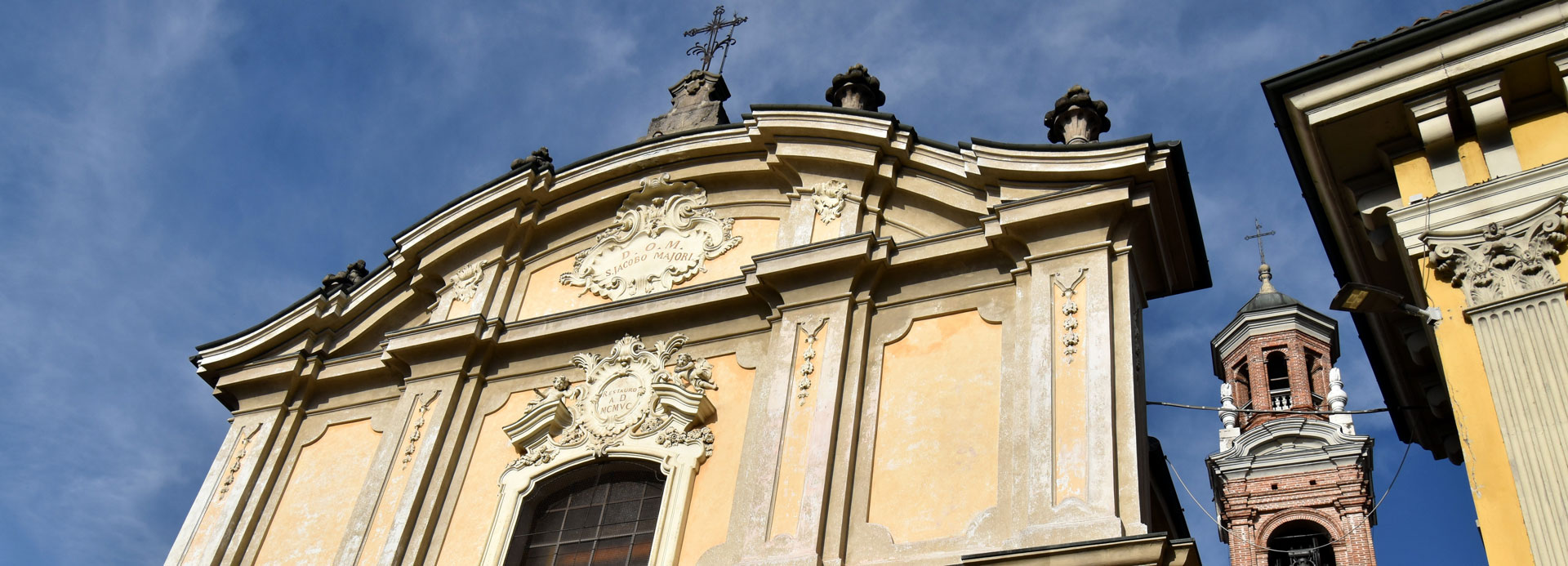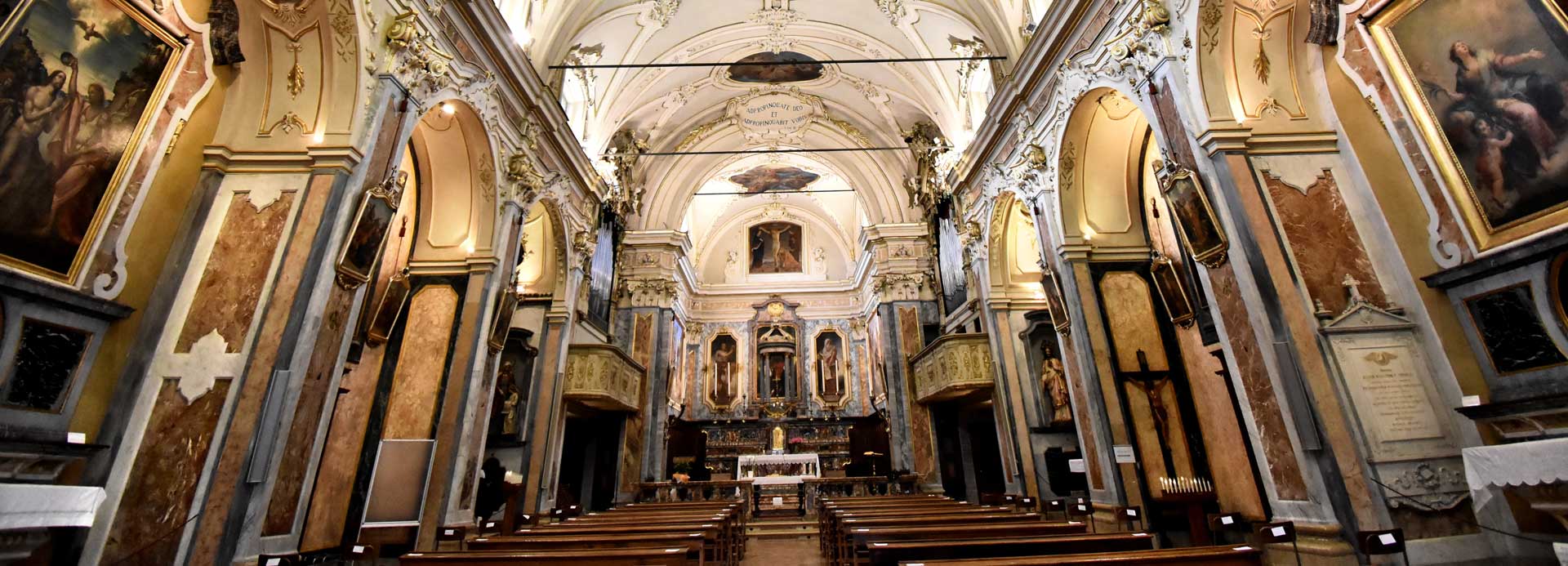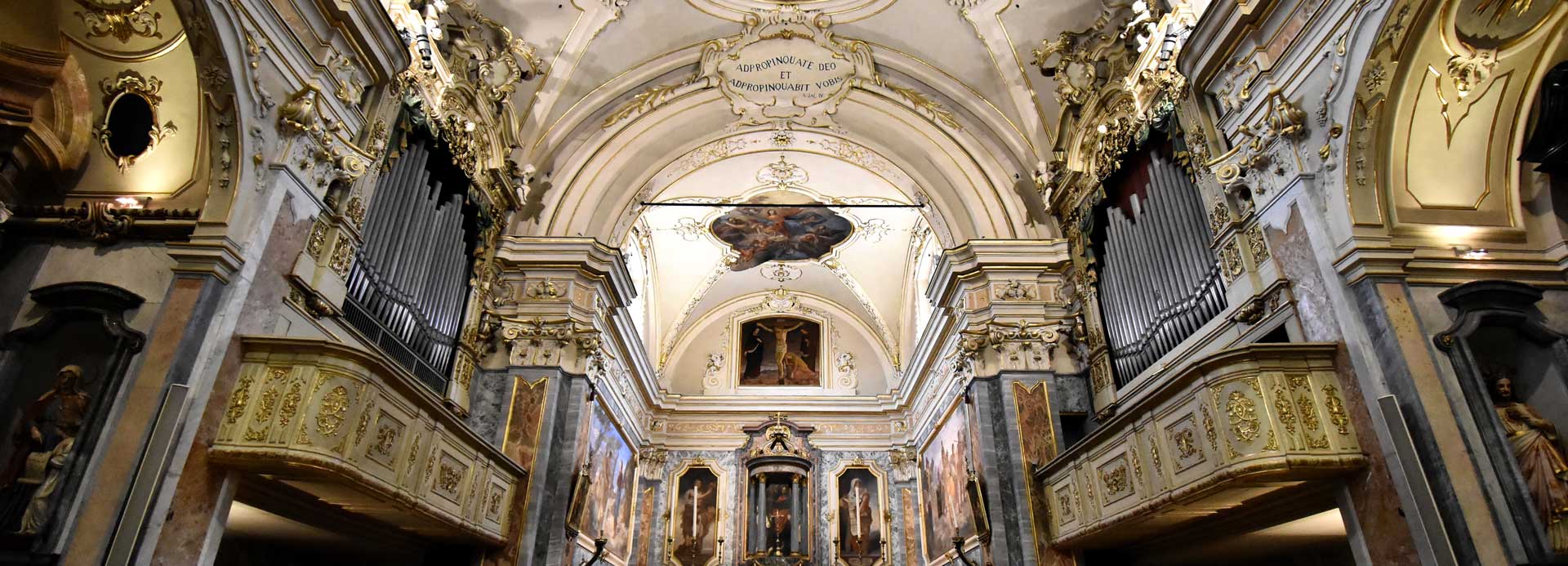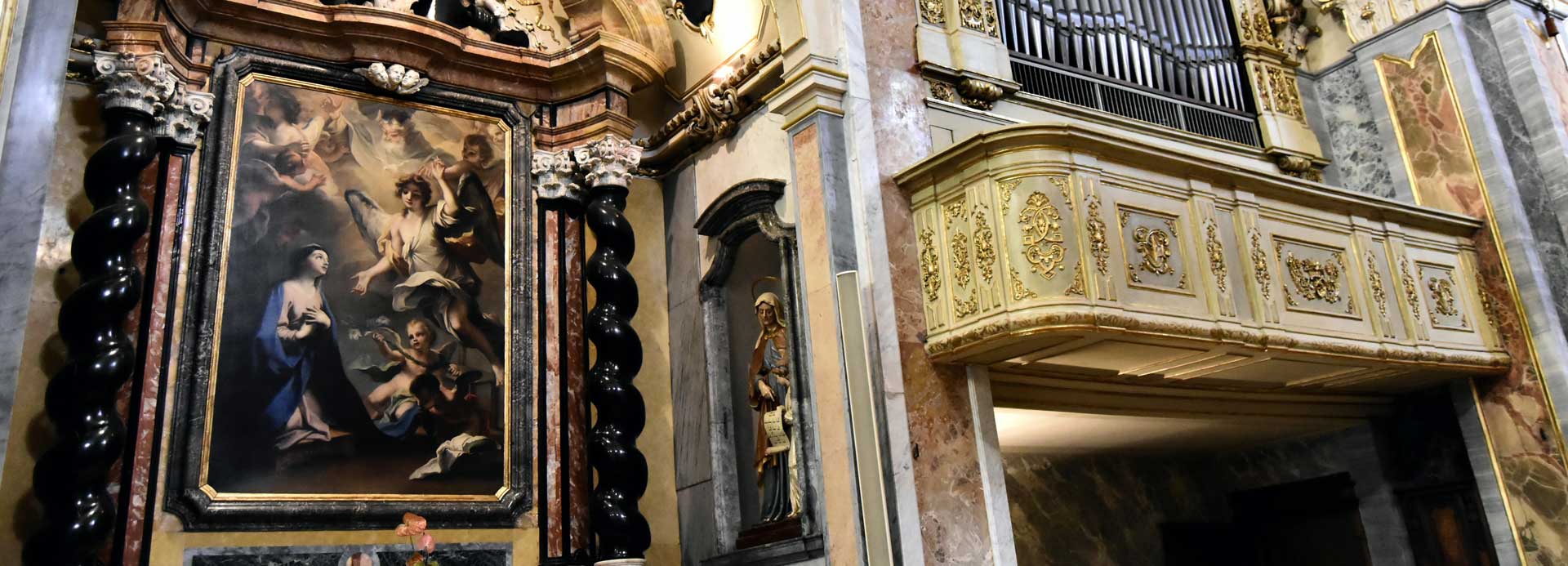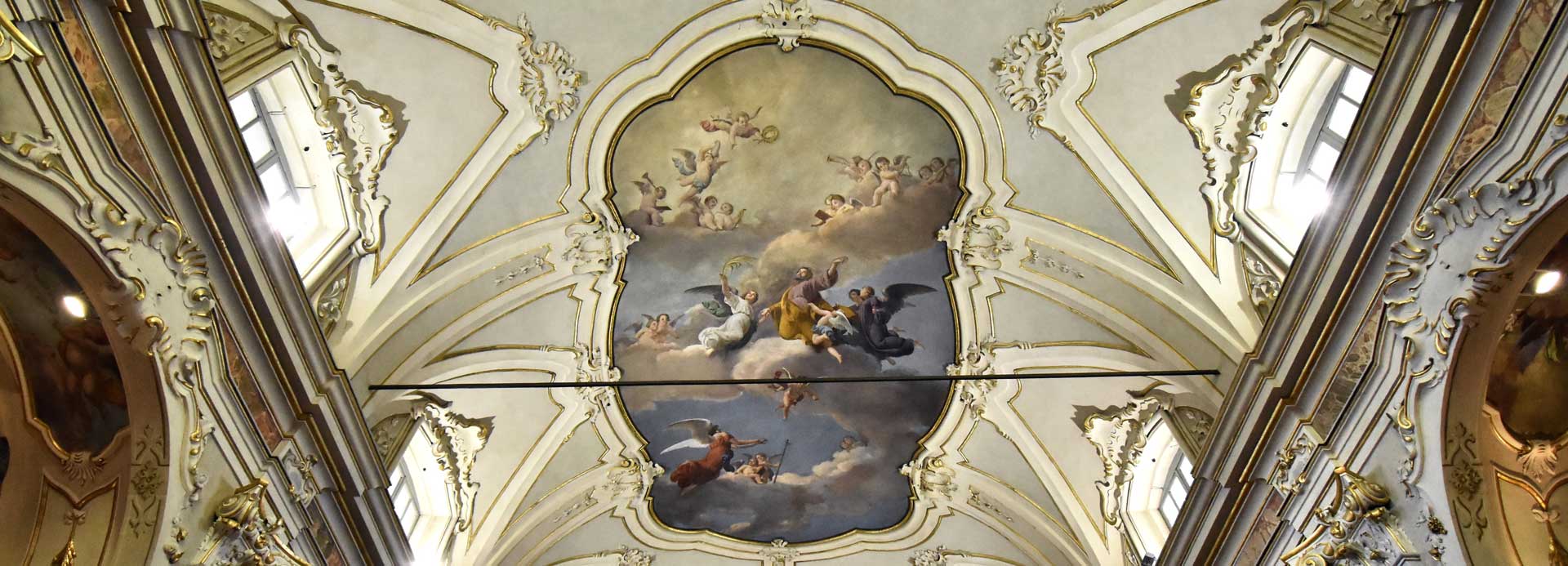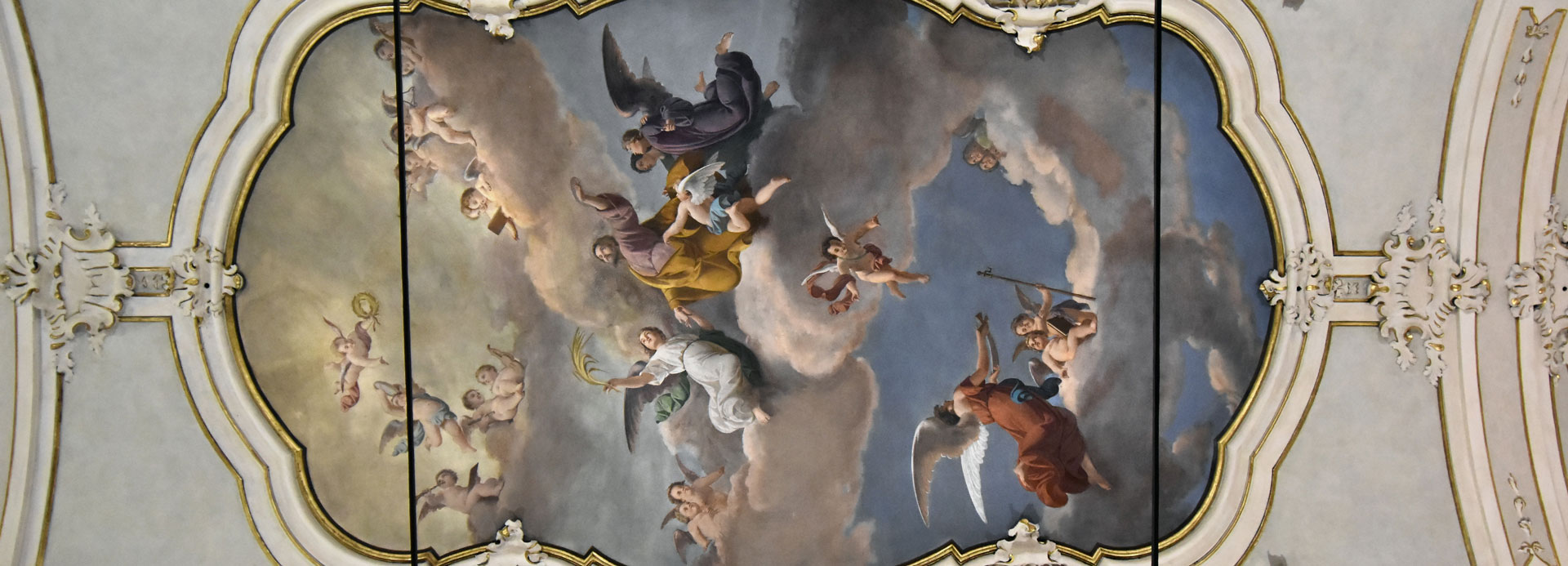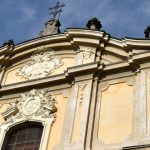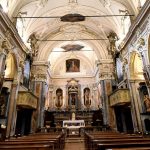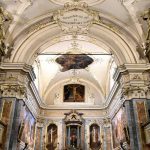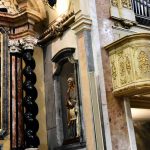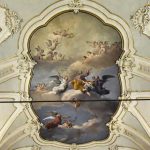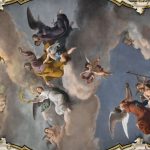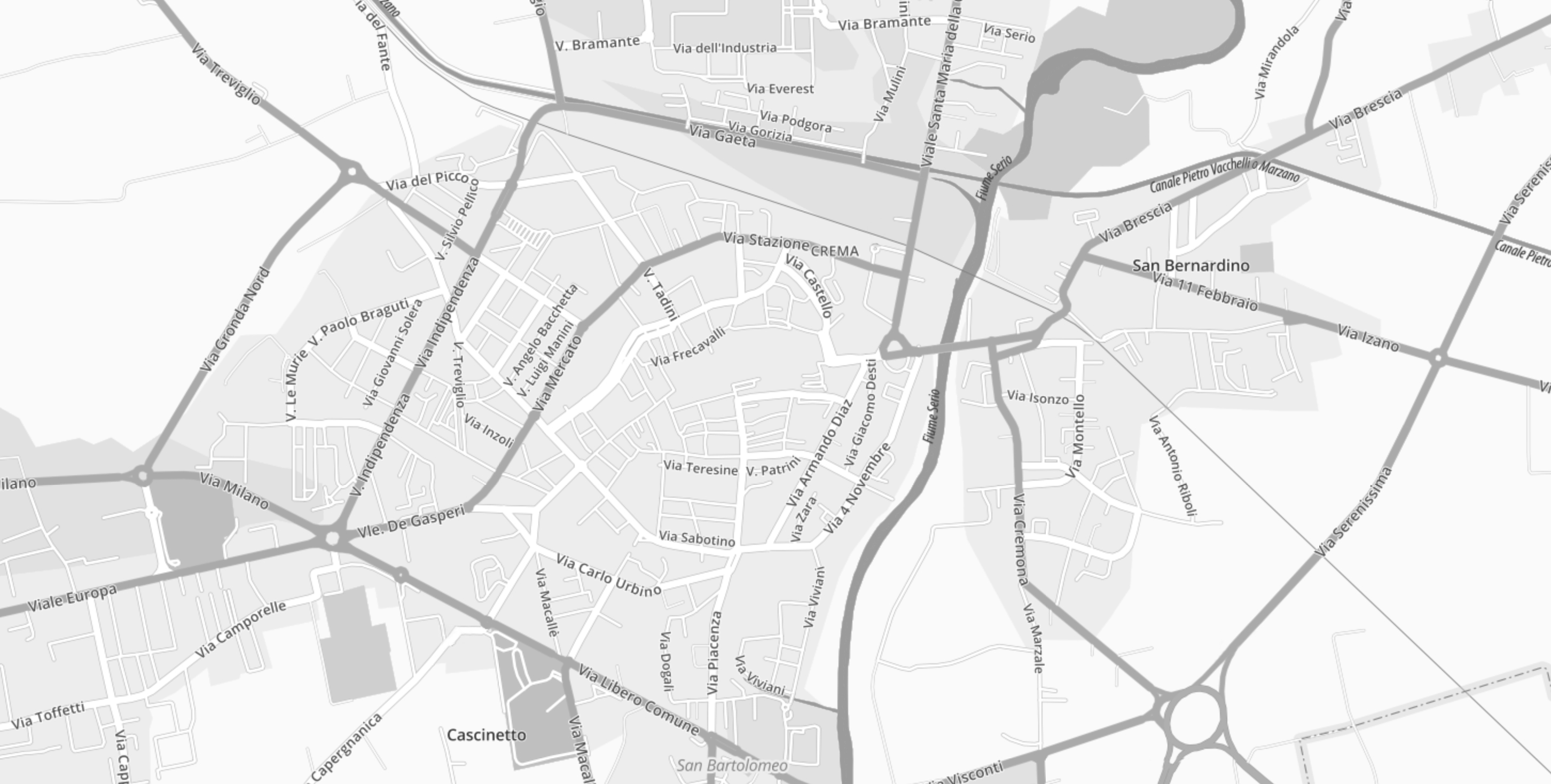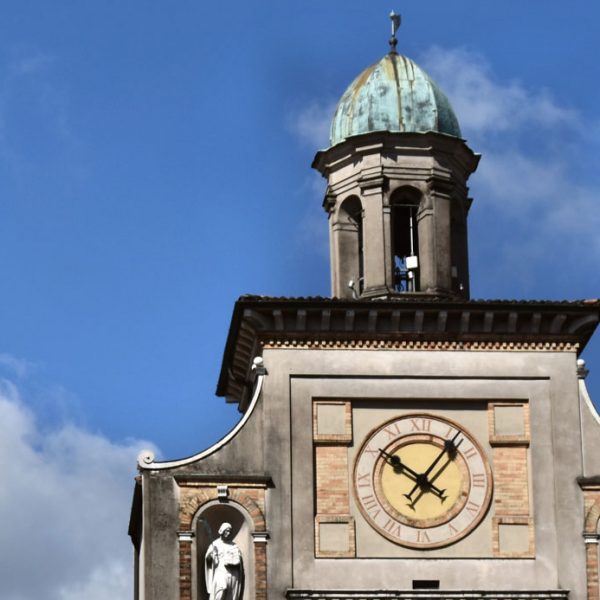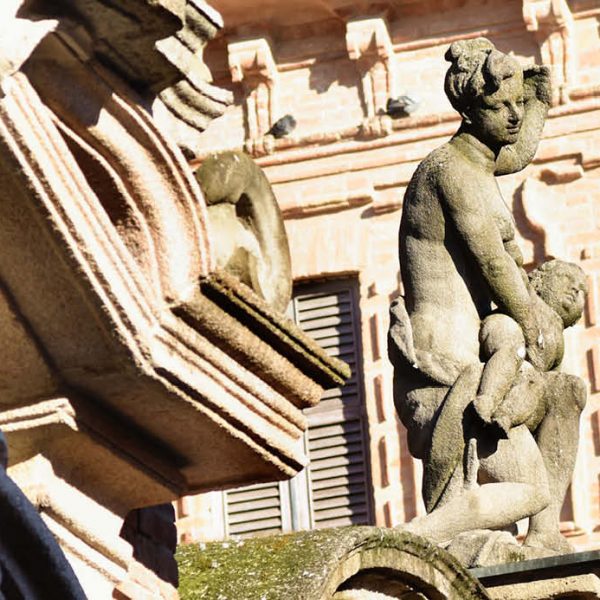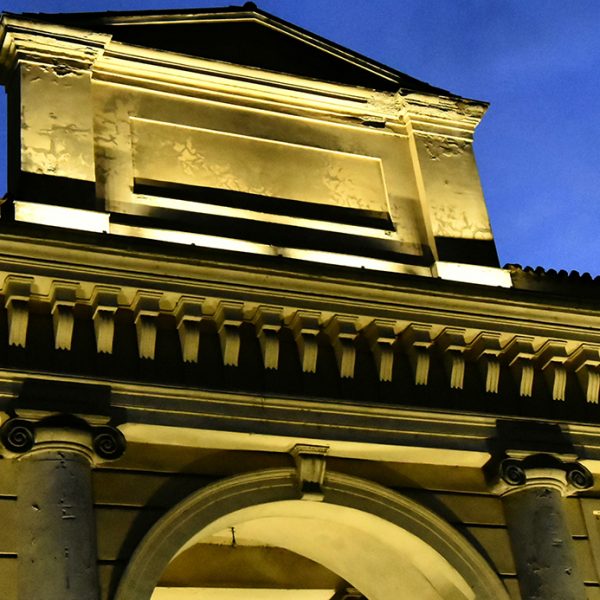 Tutti i luoghi
Tutti i luoghi
Established by the Hermit Monks
The existence of a church in this area of the town dates back even to the first half of the 11th century. In accordance with tradition of the time, a sacred edifice dedicated to one of the apostles was, in fact, built near the Porta Ripalta gateway. In 1257 we have the first mention of the church in a papal bull, which established its donation by the Hermit Monks. In the mid 1300s the monks left the church which became a parochial seat left in the hands of secular clergy.
This place of worship underwent various phases of construction and the building which stands today, merged with the previous construction, dates back to a period between 1712 and1749. The belltower was raised in 1724, along with the renovation of the sacristy and the Baroque style of decoration. The last additions were made in the 1800s and include the decorative part carried out by Conti and Galizzi.
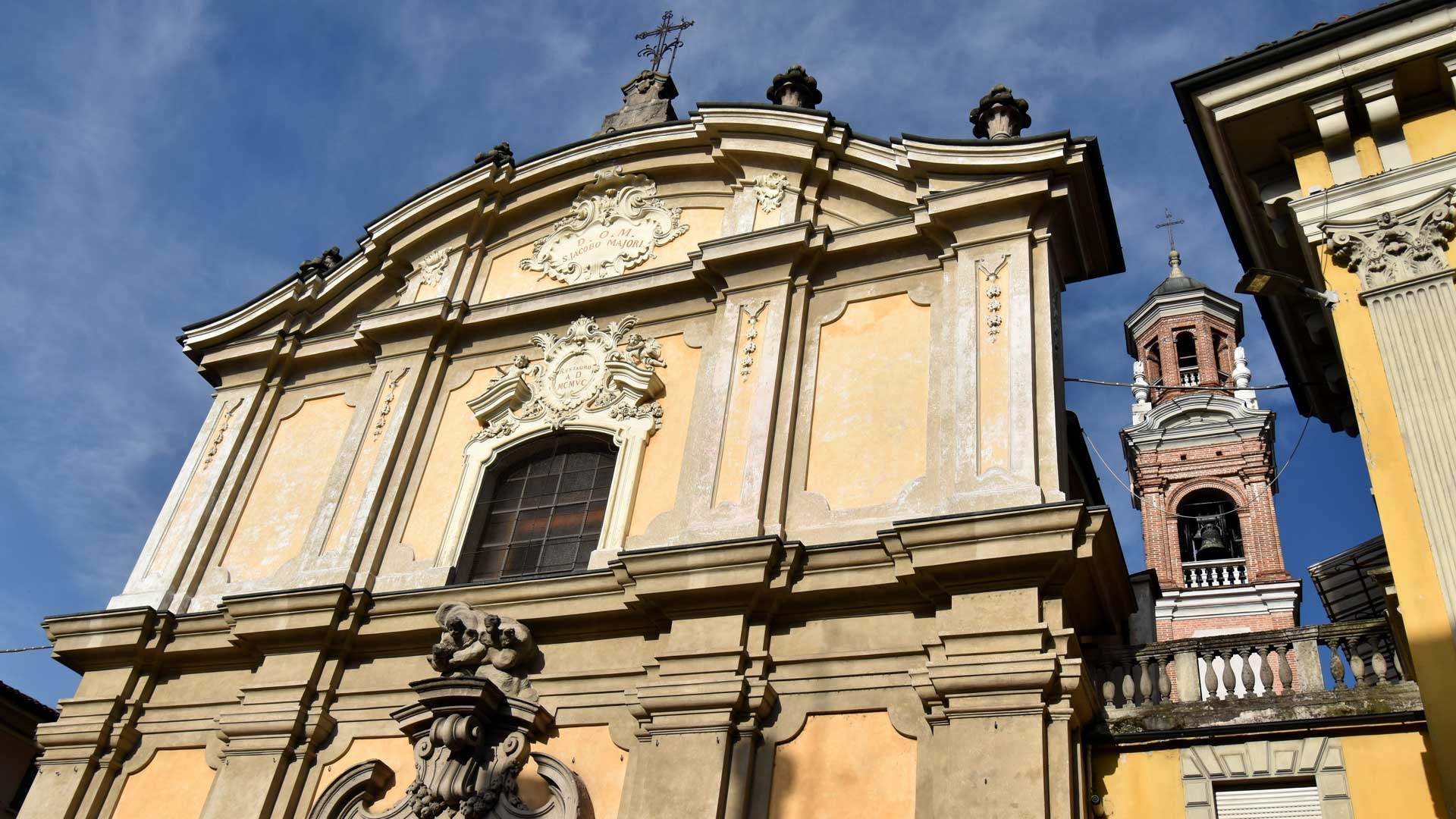
A staircase with a fine columned banister leads up to the entrance elevated above ground level. The cornice marks the separation of the facade into levels. Four columns rising from a high base and terminating in Tuscan capitals decorate the first level of the facade on each side of the entrance with its imposing pediment. The second floor presents a central large window decorated with stucco cherubs and festoons of flowers. Four simple columns repeat the decoration at the sides. A large curved lintel finishes the facade above the stucco decorated tympanum. Inside the church we have a single nave, which probably harks back to the construction of the building in the 1500s. Three, richly decorated chapels are collocated along each side. The first chapel on the left is dedicated to Saint Christopher, which houses a painting by Gervasio Gatti (1598) of the iconic figure of the Saint carrying the child Jesus on his shoulder and holding a staff. Today the chapel hosts the marble baptismal font dating back to 1539. Additional frescoes were painted by Conti of Crema. Continuing along the left of the church we come to an altar dedicated to Saint John the Baptist, where we can admire a large representation of ‘The Baptism of Christ’, executed by Vincenzo Civerchio in 1520.
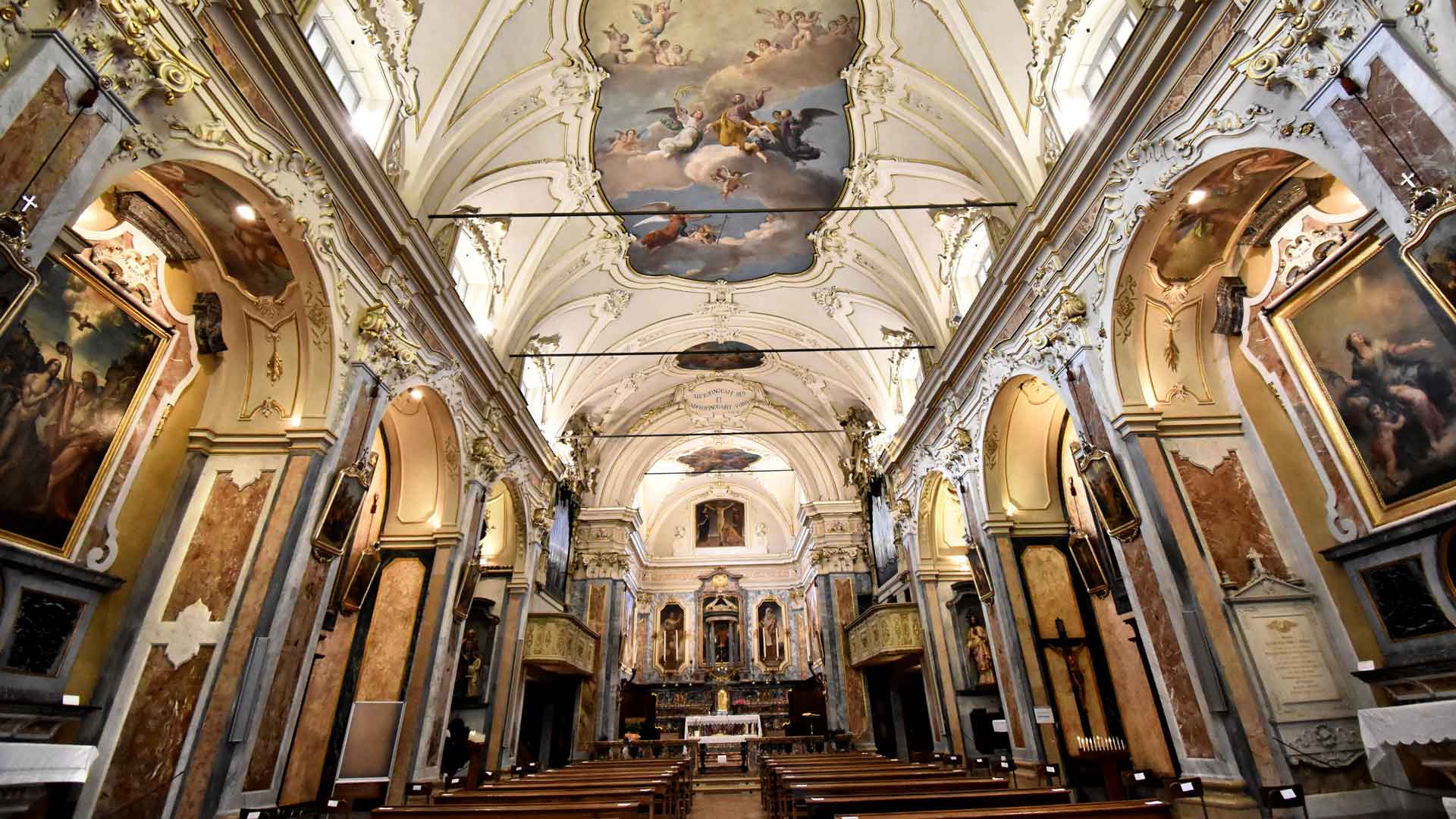
The adjacent painting depicts ‘Saint Valentine Healing the Sick’, painted by Giacomo Ceruti, or so-called ‘Pitochetto’, and comes from the ex consecrated Chapel of the Disciplines. The last chapel on the left is dedicated to the Holy Virgin and houses a particularly sweet and refined representation of ‘The Annunciation’, by Legnanino (pre 1715). The presbytery is the result of 18th century intervention and is home to paintings dedicated to the life of Saint James. To the left of the altar we can see frescoes representing ‘The Vocation of Saint James’, and ‘Saint James’ Path Towards Martyrdom’, on the right, both painted by Eugenio Giuseppe Conti (1842-1909) and surrounded by large, stucco frames on faux marble walls. Conti also painted the two paintings on the back wall on either side of the altarpiece, ‘King David’ and ‘The Prophet Isaiah’, which underline the apostolic mission of Saint James. ‘Saint James Preaches in Judaea’, sits in the centre and narrates the life of the Saint, concluding in ‘The Glory of Saint James’, on the presbytery ceiling. F. Bianchi’s ‘The Assumption’, completes the decoration of the Presbytery along with Giacomo Piccinini’s ‘Crucifixion’.
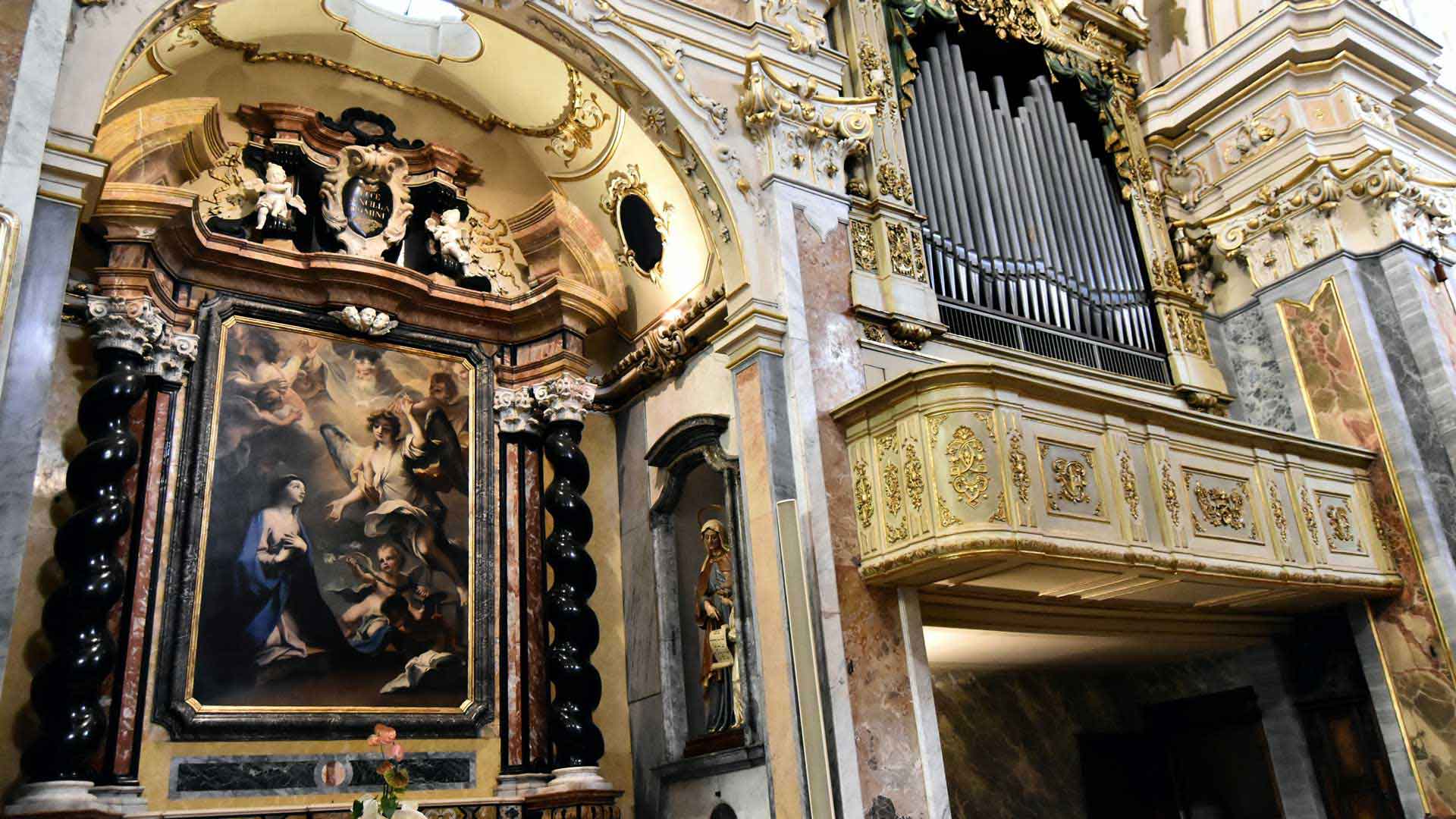
The altar itself is in polychrome marble and is quite monumental in its Neo-Classical style, with further decoration of the temple dedicated to the adoration of the Eucharist. On the right hand side of the nave we have the Chapel of the Holy Sacrament. The Brotherhood of the Holy Sacrament commissioned Giovanni Battista Botticchio in 1666 to paint ‘The Supper in Emmaus’, now relocated to the counter-facade. Three other paintings by Gian Bettino Cignaroli (1739) today hang in its place, ‘Saint Andrew of Avellino’, ‘Saint Luigi Gonzaga’ and ‘Saint Stanislao Kostka’. Moving along we find the side entrance on the right, above which is a painting of ‘The Virgin Mother and Child and Saints Rocco and Sebastian’, which originally came from the ex-chapel of Saint Rocco and is attributed to Tommaso Pombioli.
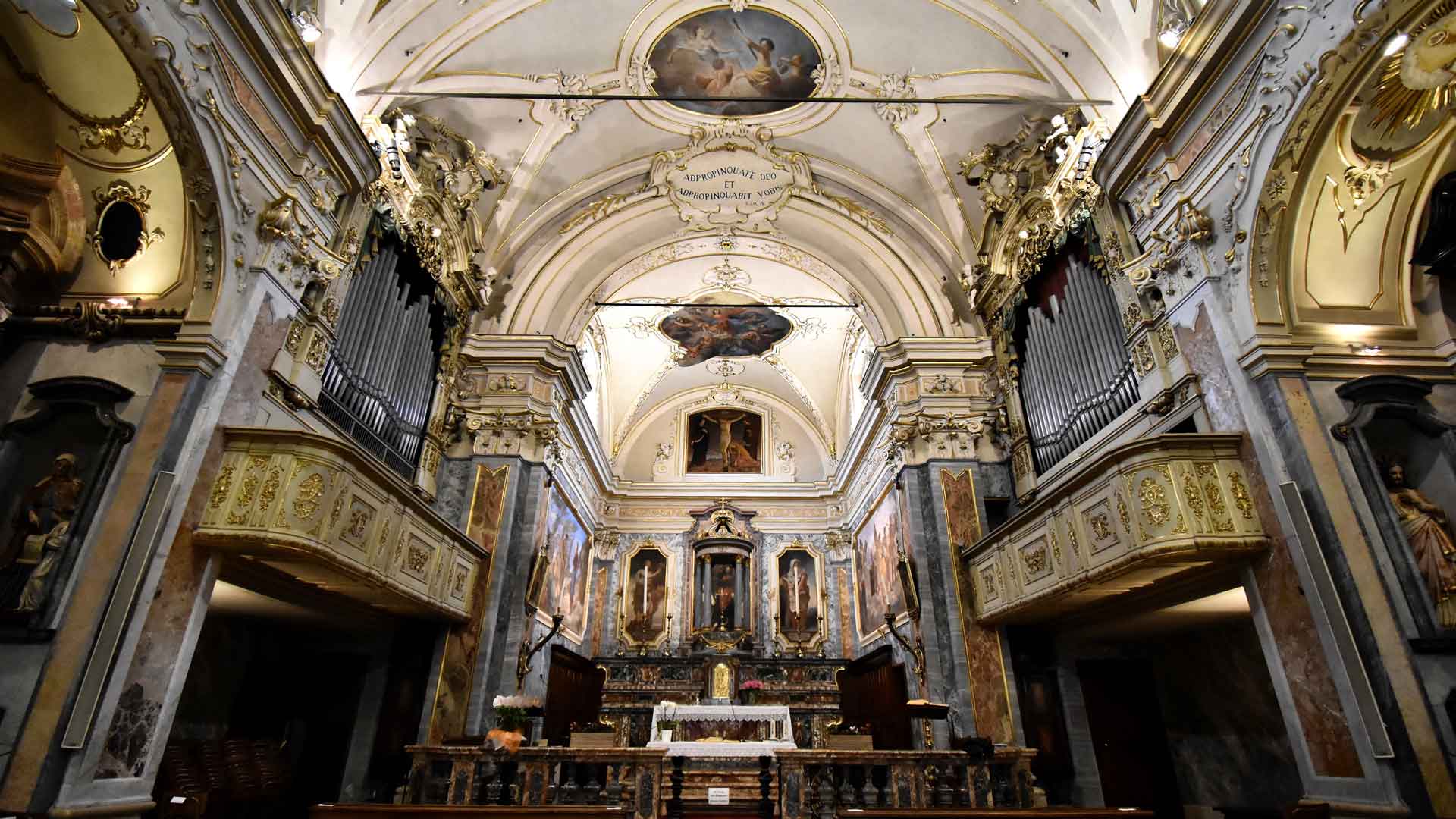
The next chapel is dedicated to Saint Lucia, where she is represented in a painting by Mauro Picenardi, as she ascends into heaven accompanied by two cherubs. The last chapel along this wall is dedicated to Saint Francis of Sales, whose depiction on the altar is signed and dated by Giovan Battista Lucini. Eugenio Giuseppe Conti was commissioned to carry out the frescoes in the side chapels which were then decorated with angels, cherubs and delicate painting. The altars are decorated with marbles and statues, executed by the Fantoni workshop in Bergamo. On either side of the presbytery sits the organ,( the 17th-century organ was replaced by the current instrument by the Inzoli company) and the richly decorated, wooden choir stalls which followed the designs of Giovanni Battista Caniani of Bergamo. The confessionals situated on either side of the main entrance are also worthy of notice. Designed by the same Caniani, they are also decorated with sculptures from the Fantoni workshop.
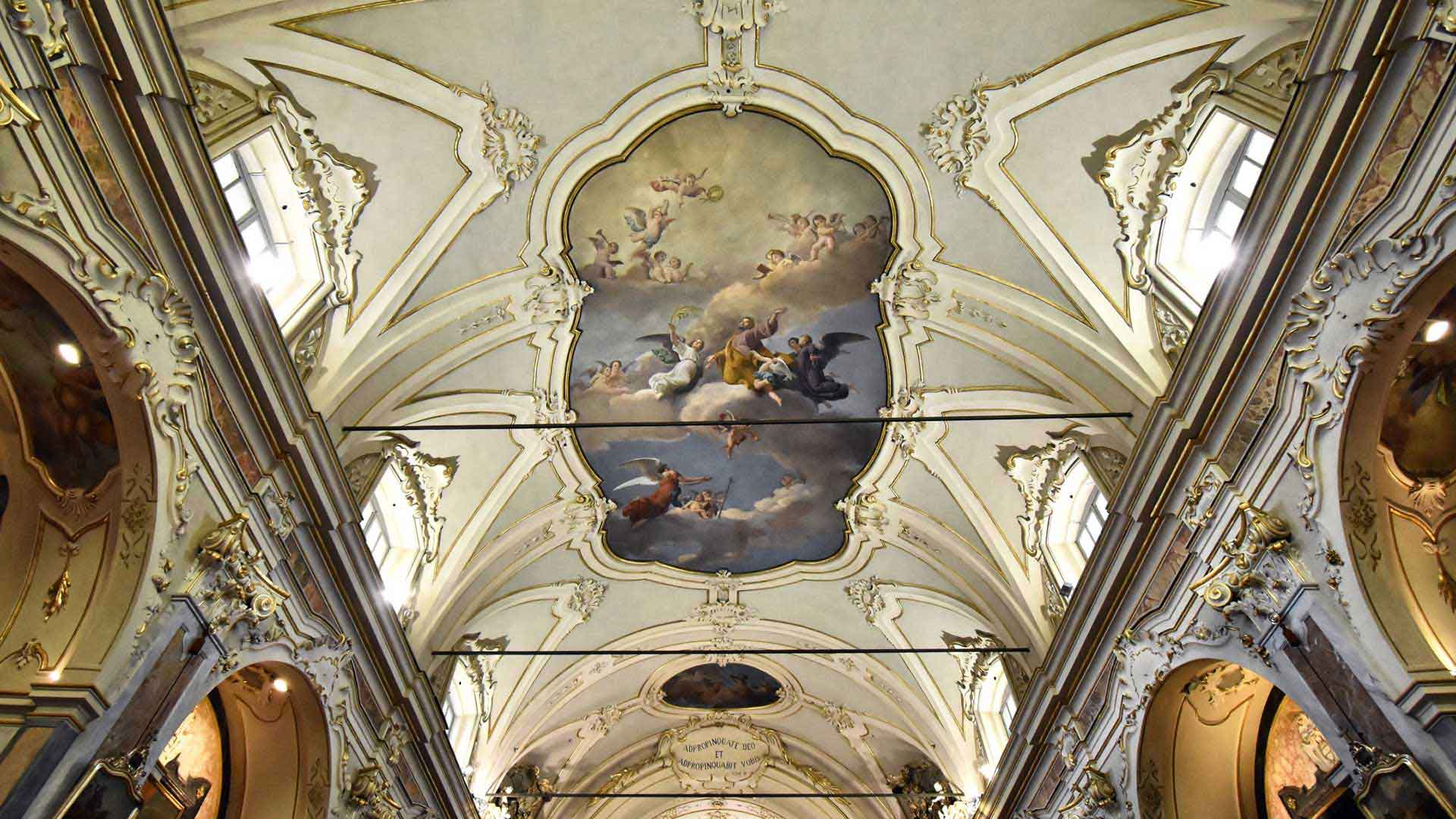
Info
Piazza Caduti sul lavoro
Hours subject to restrictions
Visits prohibited during religious celebretions

